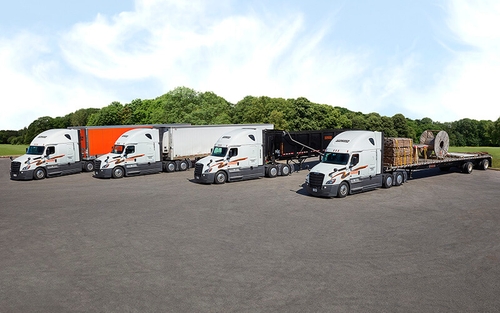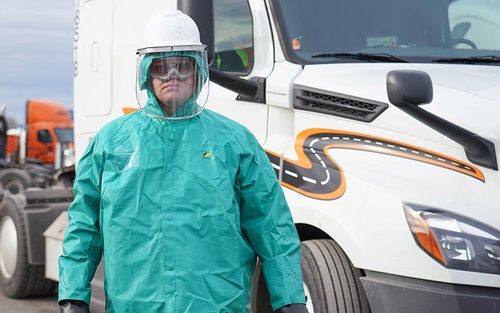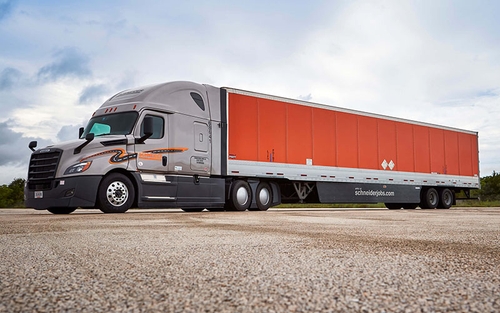Estimated reading time: 2 minutes
Ever wondered what it takes to ensure your groceries arrive fresh at your local supermarket? From produce to frozen goods, reefer drivers play a crucial role in transporting temperature-sensitive freight across the country.
In this blog, we’ll go over what a reefer driver is, what the job entails and what makes it a unique opportunity.
What is a reefer driver?
A reefer truck driver is someone who hauls refrigerated, or “reefer,” trailers. These trailers are equipped with Trailer Refrigeration Units (TRUs) that control their internal temperature, ensuring the safe transport of perishable goods.
Reefer drivers haul temperature-sensitive freight, such as:
- Fruits and vegetables.
- Dairy products.
- Meat and poultry.
- Flowers.
- Pharmaceuticals.
What are the benefits of being a reefer driver?
1. Consistent freight.
Reefer freight is always in demand. Whether they’re hauling fresh or frozen goods, reefer drivers enjoy consistent loads year-round. This steady demand not only means there will be steady freight and miles to rely on, but also an added sense of job security for drivers.
Reefer drivers often work on a dedicated account, meaning they haul freight for just one customer. Because of this, they also enjoy consistent paychecks and home time.
2. Less downtime.
Due to the consistent supply of freight, reefer drivers wait less in between loads.
Plus, reefer trailers can be used to haul dry goods as well. This allows reefer drivers to switch between refrigerated and dry loads, which decreases downtime and deadhead miles.
3. Diverse options.
Because there are so many reefer jobs available, drivers have a variety of home time options to pick from. At Schneider, reefer driving jobs are available in local, regional and over-the-road configurations.
Plus, refrigerated deliveries are often made late at night or early in the morning. This means that reefer jobs are also often available as nighttime driving opportunities.
Is hauling a reefer trailer hard?
Beyond the typical duties of a truck driver who hauls dry van freight, reefer drivers have several additional responsibilities, including:
1. Temperature monitoring.
Reefer drivers must ensure their freight temperature is maintained. This requires finding out the temperature needs of the next load ahead of time and precooling the trailer if needed.
This responsibility can be stressful, as breakdowns or changes in temperature can lead to spoiled goods.
2. Equipment maintenance.
Reefer trailers use additional technology to ensure freight is kept at the correct temperature. These cooling systems require regular maintenance to ensure they are functioning correctly.
All the extra equipment on a reefer trailer requires routine inspection, adding more steps to a driver’s pre-trip inspection checklist.
3. Extra cleaning.
Reefer drivers must keep a clean trailer to prevent contamination while hauling food and other perishables. This means more frequent and thorough cleaning to meet health and safety standards.
After certain deliveries, reefer drivers may not only have to sweep the trailer, but wash it out to clear any wet spots, spills or strong odors from the previous load.
4. Strict delivery times.
Reefer drivers follow strict delivery schedules to ensure perishable goods do not spoil.






